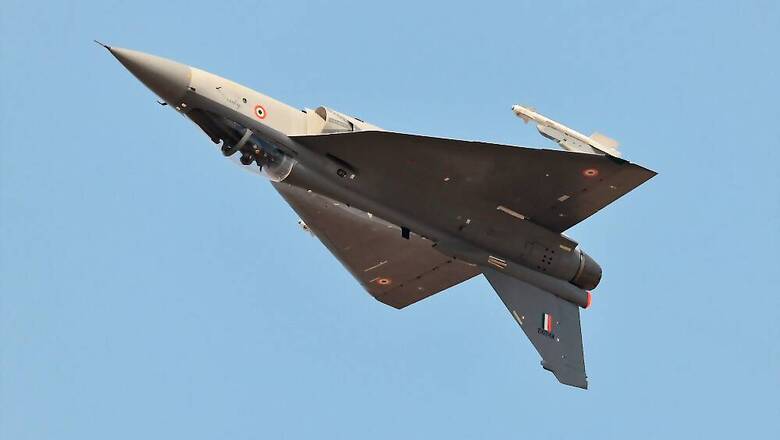
views
New Delhi: A more powerful engine, albeit imported, will enable the Mark-2 naval version of the indigenous light combat aircraft (LCA) meet the requirements of the Indian Navy, its developer says, even as the navy chief has said that the Mark-1 version has not delivered.
"I would think that it is the Indian Navy's prerogative on their operational needs. We are trying to develop an indigenous carrier-borne aircraft from scratch and it is certainly a challenging proposition," Aeronautical Development Agency (ADA) Director C.D. Balaji said, responding to a recent statement by the navy chief, Admiral Sunil Lanba.
Speaking about the upgraded version of the aircraft, he said: "A new programme with a higher thrust engine was sanctioned and termed LCA Navy Mk2. This programme is envisaged to minimise the constraints of Navy LCA Mk-1.
As for the new power plant, Balaji said: "The GE 414 engine has adequate thrust for a heavier take-off and this would permit the mission performance to be met as indicated at the time of sanctioning the Navy LCA Navy Mk-2 (in 2009)."
The GE F 404 powers the Mk-1 version.
"It is expected that the first prototype would commence flight testing by end 2020. The second prototype is expected a year later. It is expected that flight-testing would take about four years," Balaji said, adding: "It is expected that Mk-2 can be available from 2024-25 onwards."
As part of its development, a dedicated Shore Based Test Facility (SBTF) has been set up to replicate to a large extent a short take-off but with arrested recovery (STOBAR) carrier.
India's sole aircraft carrier, INS Vikramaditya, has this capability, as does the first indigenous aircraft carrier (IAC), INS Vikrant, now under construction at the Cochin Shipyard. The next generation IAC, INS Vishal, is also likely to have this capability or the even more advanced EMALS (electromagnetic aircraft launch system).
"The next big proving capability is for arrested recovery, for which a number of activities like handling quality evaluation, higher sink rate landing, structural testing, arrester hook integration on aircraft and the like have been carried out. The phase of actual taxi-in engagement and flight engagement is progressively planned during the course of 2017."
What then went wrong with the Mk-1?
Balaji said it was intended to be a technology demonstrators (TD) that provide inputs for the final development of an aircraft.
"When the programme was envisaged at the time of its sanction in 2003, it was expected that the naval version could be derived from the air force version, already flying, by introduction of a stronger landing gear and arrester hook. However, as detailed design progressed, there was a need for significant changes to the structure, a much more complex landing gear to be housed in the centre fuselage, and an externally mounted arrester hook on a dedicated platform.
"Further, the major constraint of design space due to the conversion of the existing LCA platform resulted in a sub-optimal design and compromises leading to the Navy Mk-1 variant being heavier than anticipated. A naval aircraft is typically 500-700 kg heavier than its air force variant due to the need of strengthened structure, heavier landing gear and arrester hook. However, the navy Mk-1, being a first-time development with associated conservatism in design and constraints of the air force configuration, led to an aircraft weight of around 900-1,000 kg heavier than the air force Mk-1.



















Comments
0 comment